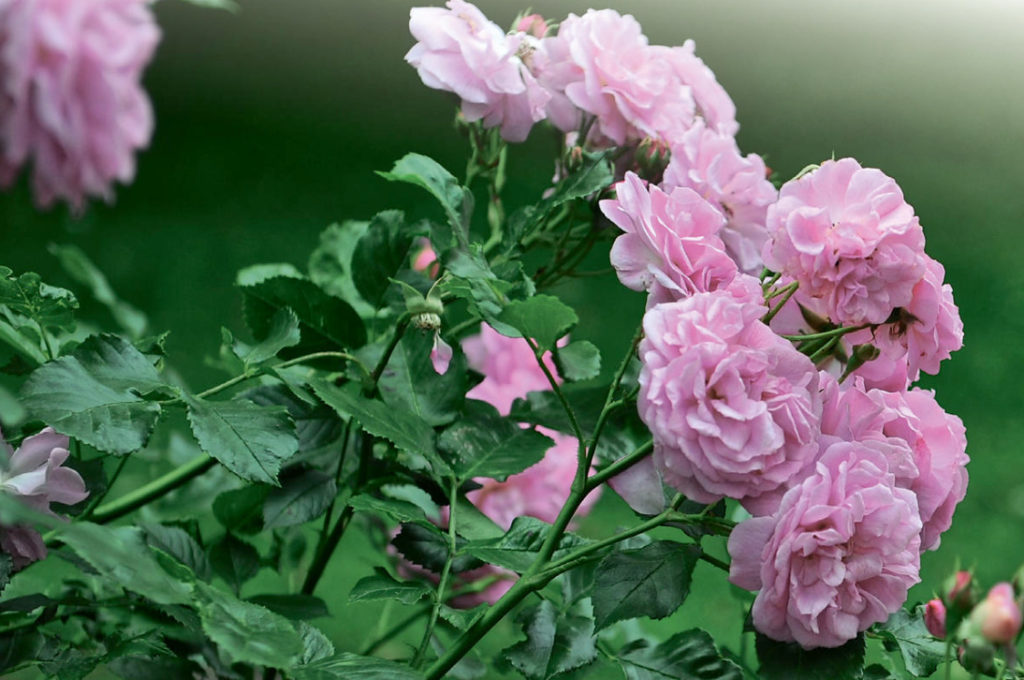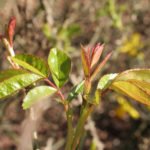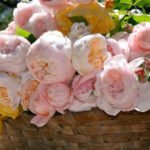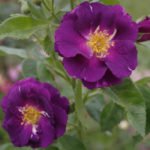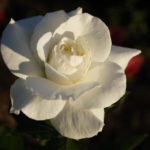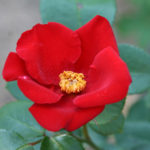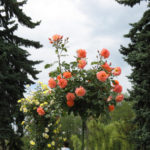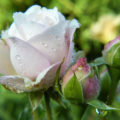Musk roses are very beautiful due to the abundant flowering and bright decorative fruits. But at the same time they are unpretentious and have excellent health.
History
- The first musk hybrid was bred in 1904, and over a century or so, many varieties have appeared that can decorate any rose garden.
- The ancestor of the roses of this group, Rosa moschata, comes from India and southern China.
- In the XIX century, when it was brought to Europe, the German breeder Lambert and his English colleague Pemberton paid special attention to the flower. They presented the first musk hybrids, which, like modern tea-hybrid roses, bloom repeatedly, but at the same time have the character and charm of species roses.
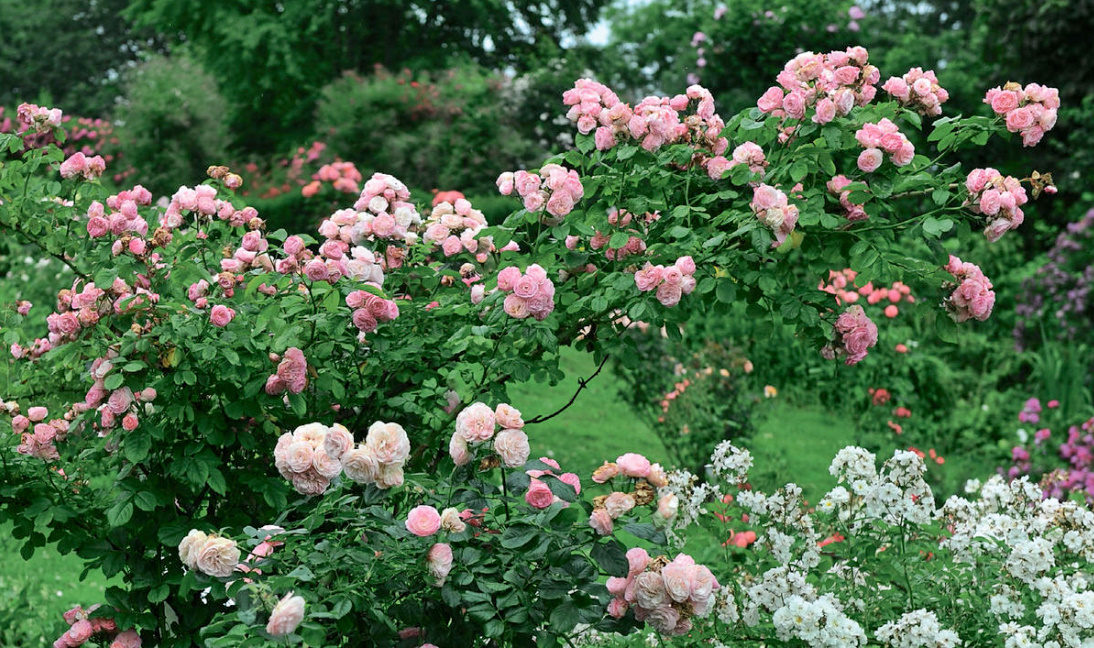
Portrait of a plant
The flowers of musky varieties are usually small, simple or semi-double (although cultivars with both double and medium-sized flowers are found). They are collected in huge paniculate inflorescences — at the peak of the season, the leaves are not visible behind the foam of flowers.
The palette includes white, pastel shades of cream, pink, yellow, apricot, rich pink and red.
The sweet-musky aroma, which gave the name to the ancestral rose, is especially inherent in terry varieties with larger flowers, for example, ‘Buff Beauty’ or ‘Cornelia’. In the early morning hours it is especially intense.
Roses with small, non-double or semi-double flowers, such as ‘Mozart’ or ‘Ballerina’, have a subtle smell.
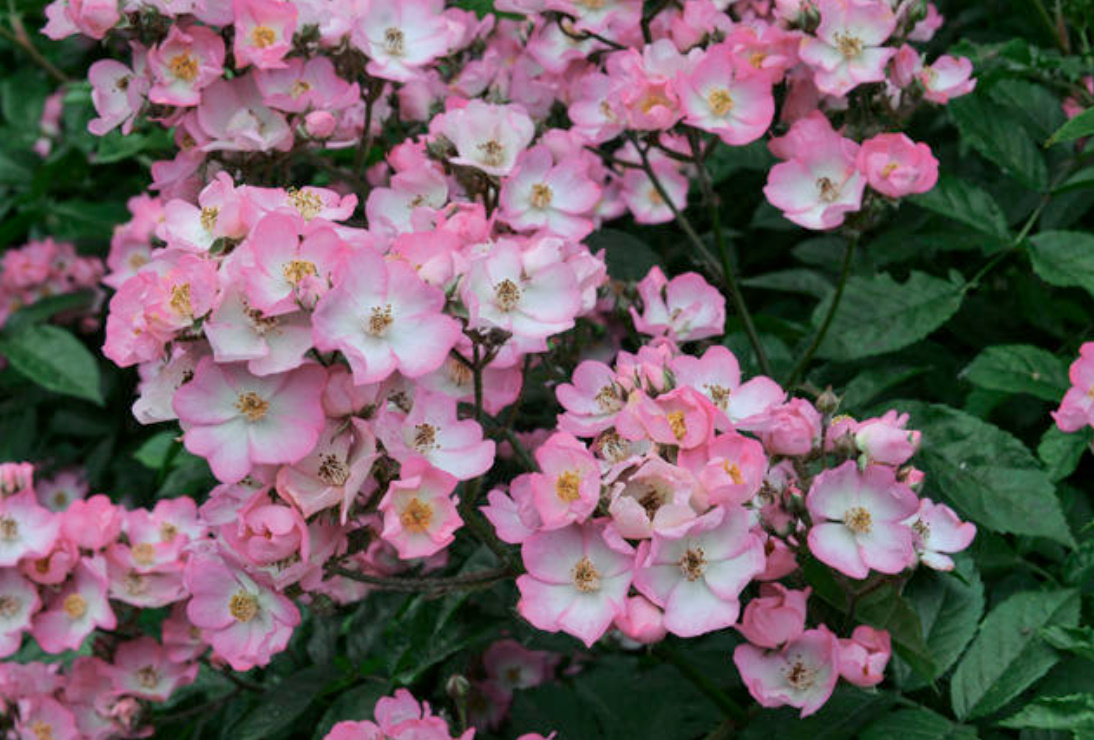
But they are constantly blooming, and in autumn they fascinate with the beauty of small, but very bright orange or red decorative fruits – the whole bush is strewn with them. Whereas varieties with larger flowers also form larger fruits, which are better pruned to provoke a second wave of flowering.
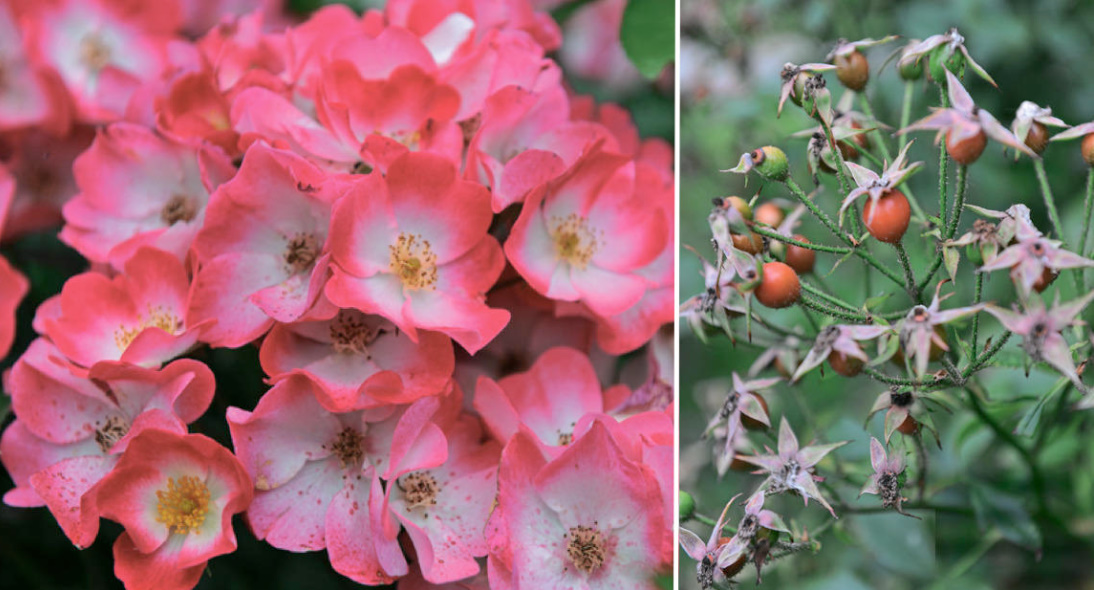
The shape of the bush in musk roses depends on the variety. Often these are sprawling shrubs, the width of which exceeds the height. There are also compact cultivars. The foliage of musk roses is usually healthy.
Features of care
The agricultural technology of musk hybrids is exactly the same as that of other roses. However, they have a peculiarity — in comparison with other groups of roses, they are “too tight” for the formation of new root shoots. Therefore, you need to try to preserve the shoots as much as possible in winter, bending and hiding them.
Spring pruning is mainly reduced to sanitary: overwintered shoots are not shortened, only sick and dry branches are cut out. Forming pruning is carried out only if the bush is heavily thickened.
Most varieties of musk roses can be easily propagated by cuttings.
Musky roses in the garden interior
Varieties with long shoots can be grown as climbing, tying them to a support, or in the vicinity of clematis. Another option is to use it as a tapeworm, allowing the fountain—like bush to “splash” on the lawn. These same varieties will look advantageous in the background of the flower garden, where they will create a very picturesque background.
Important: when choosing a suitable corner, remember that many musk roses tolerate partial shading.
Compact cultivars of musky roses will decorate the middle and foreground of the mixborder.
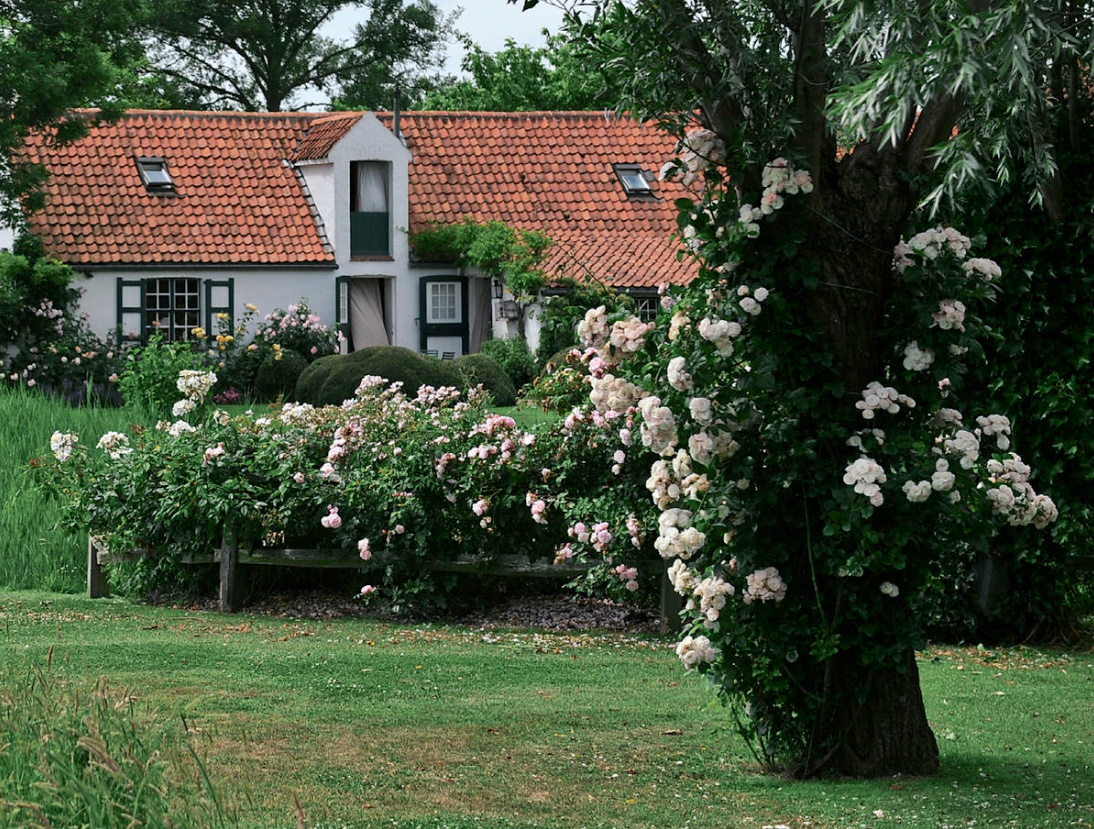
Lovers of the “new wave” garden style who do not want to give up roses will like varieties with small non-double flowers that go well with perennials of natural appearance and decorative cereals and thanks to the fruits retain their attractiveness until late autumn.
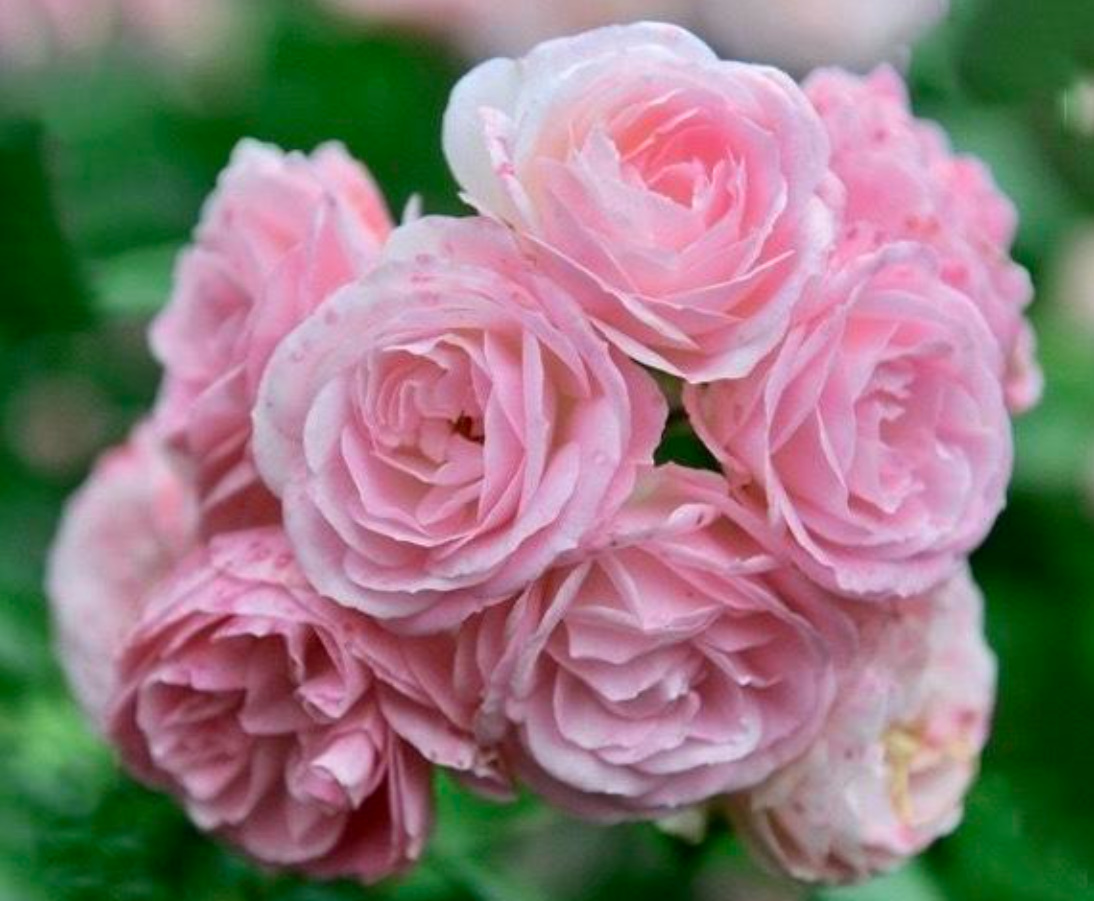
In the rose garden, you can make both a separate plot with musky roses, and play on the contrast of the flower shape by planting small-flowered musky varieties and, for example, large-flowered tea-hybrid varieties.
Popular varieties of musk roses
White:
- ‘Guirlande d’Amour’ (Lens, 1993),
- ‘Jacqueline Humery’ (Lens, 1995),
- ‘Merle Blanc’ (Lens, 1985),
- ‘Moonlight’ (Pemberton, 1918),
- ‘Pax’ (Pemberton, 1918),
- ‘Prosperity’ (Pemberton, 1919),
- ‘Trier’ (Lambert, 1904),
- ‘Waterloo’ (Lens, 1996).
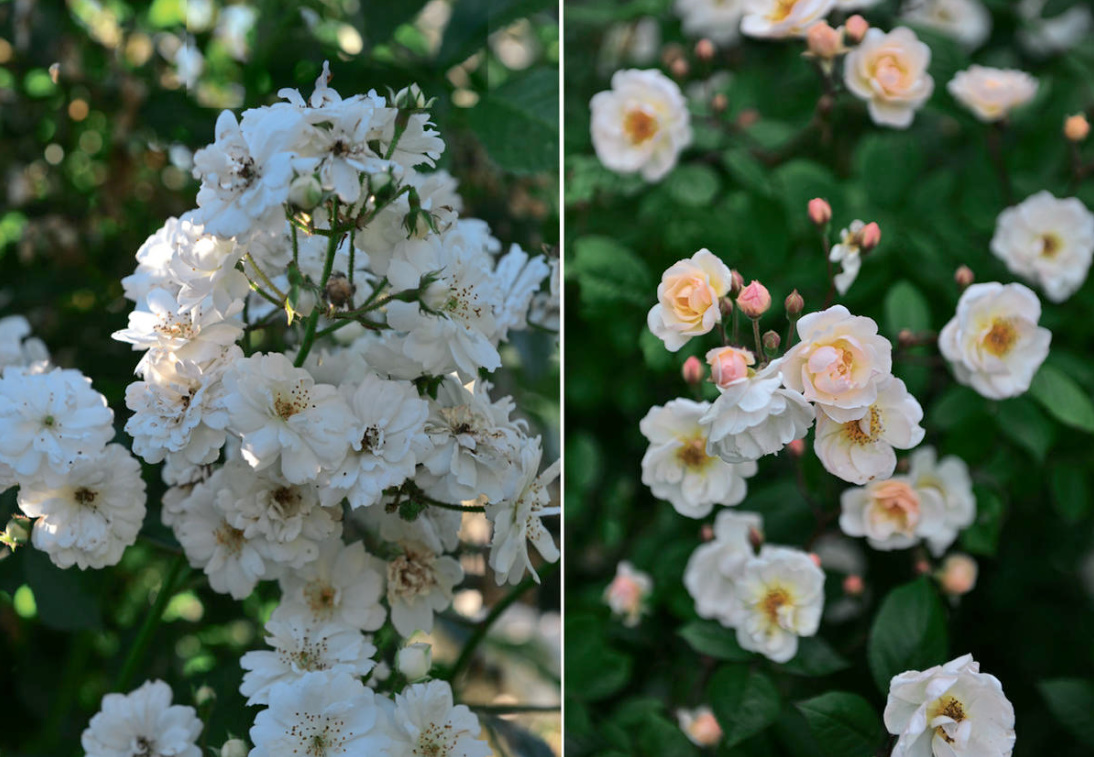
Rich pink:
- ‘Ballerina’ (Bentall, 1937),
- ‘Belinda’ (Bentall, 1936),
- ‘Bishop Darlington’ (Thomas, 1926),
- ‘Francoise Drion’ (Lens, 1995),
- ‘Heideröslein’ (Lambert, 1932),
- ‘Kathleen’ (Pemberton, 1922),
- ‘Marie Jeanne’ (Turba, 1913),
- ‘Mozart’ (Lambert, 1937),
- ‘Penelope’ (Pemberton, 1924),
- ‘Queen of the Musk’ (Paul, 1913).
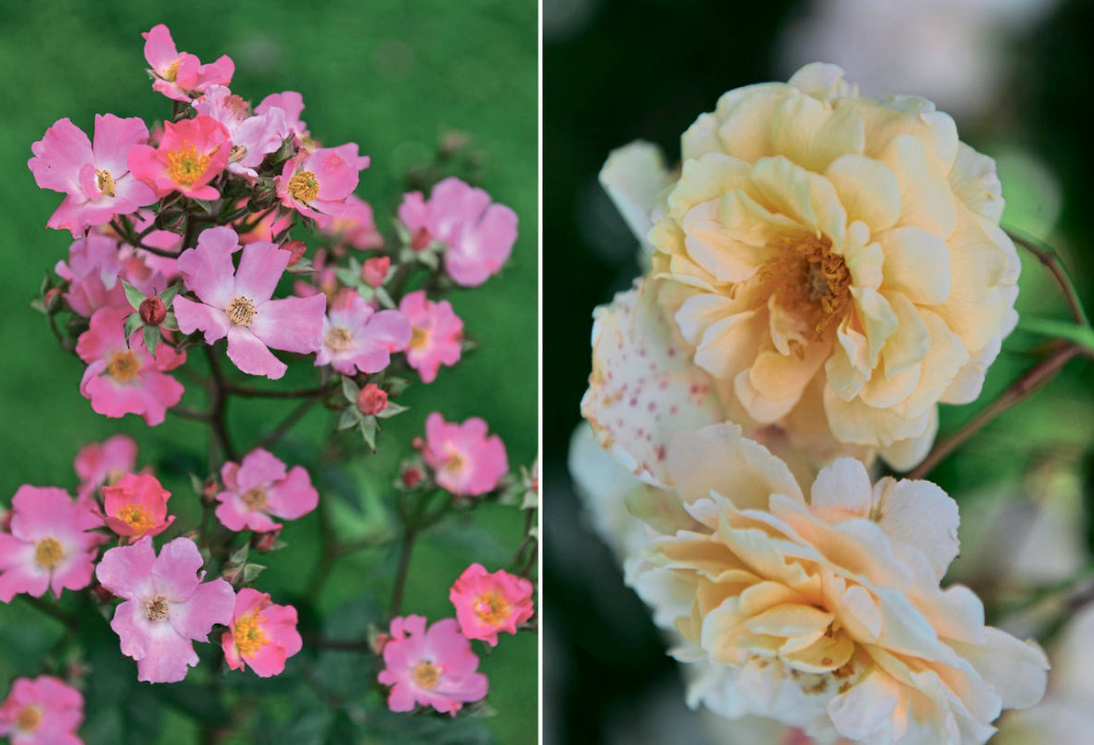
Pink:
- ‘Bouquet Parfait'(Lens, 1989 ),
- ‘Daphne’ (Pemberton, 1912),
- ‘Felicia’ (Pemberton, 1928),
- ‘Gravin Michel’durcel’ (Lens, 1994),
- ‘Heavenly Pink’ (Lance, 1997),
- ‘Heinrich Conrad Söth’ (Lambert, 1919),
- ‘Lavender Lassie’ (Cordes, 1960),
- ‘Menja’ (Petersen, 1962),
- ‘Pink Prosperity’ (Bentall, 1931),
- ‘Vanity’ (Pemberton, 1920).
Reds:
- ‘Bukavu’ (Lens, 1998),
- ‘Dinky’ (Vel-Budolf, 2002),
- ‘Eva’ (Cordes, 1938),
- ‘Nur Mahal’ (Pemberton, 1923),
- ‘Paganini’ (Lens, 1989),
- ‘Robin Hood’ (Pemberton, 1927),
- ‘Sadler’s Wells’ (Beals, 1983),
- ‘Wilhelm’ (Cordes, 1944),
- ‘Will Scarlet’ (Hilling, 1947).
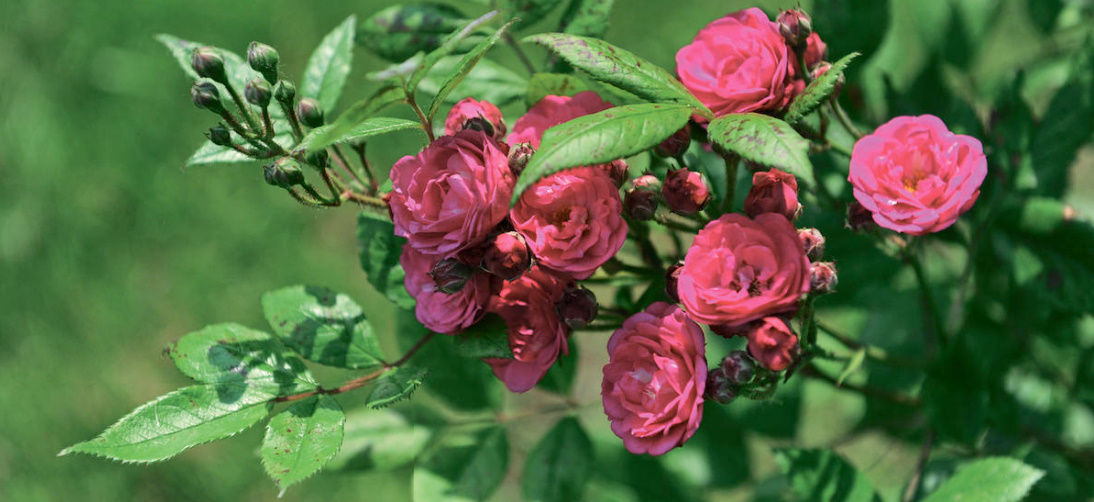
Yellow:
- ‘Aurora’ (Pemberton, 1928),
- ‘Autumn Delight’ (Bentall, 1933),
- ‘Bloomfield Dainty’ (Thomas, 1924),
- ‘Callisto’ (Pemberton, 1920),
- ‘Danae’ (Pemberton, 1913),
- ‘Daybreak’(Pemberton, 1918),
- ‘Francesca’ (Pemberton, 1928),
- ‘Thisbe’ (Pemberton, 1918).
Apricot-orange:
- ‘Buff Beauty’ (Bentall, 1939),
- ‘Clytemnestra’ (Pemberton, 1915),
- ‘Cornelia’ (Pemberton, 1925).
A mixture of colors:
‘Plaisanterie’ (Lens, 1996). Orange buds, yellow flowers turn pink until they become crimson in full bloom.
